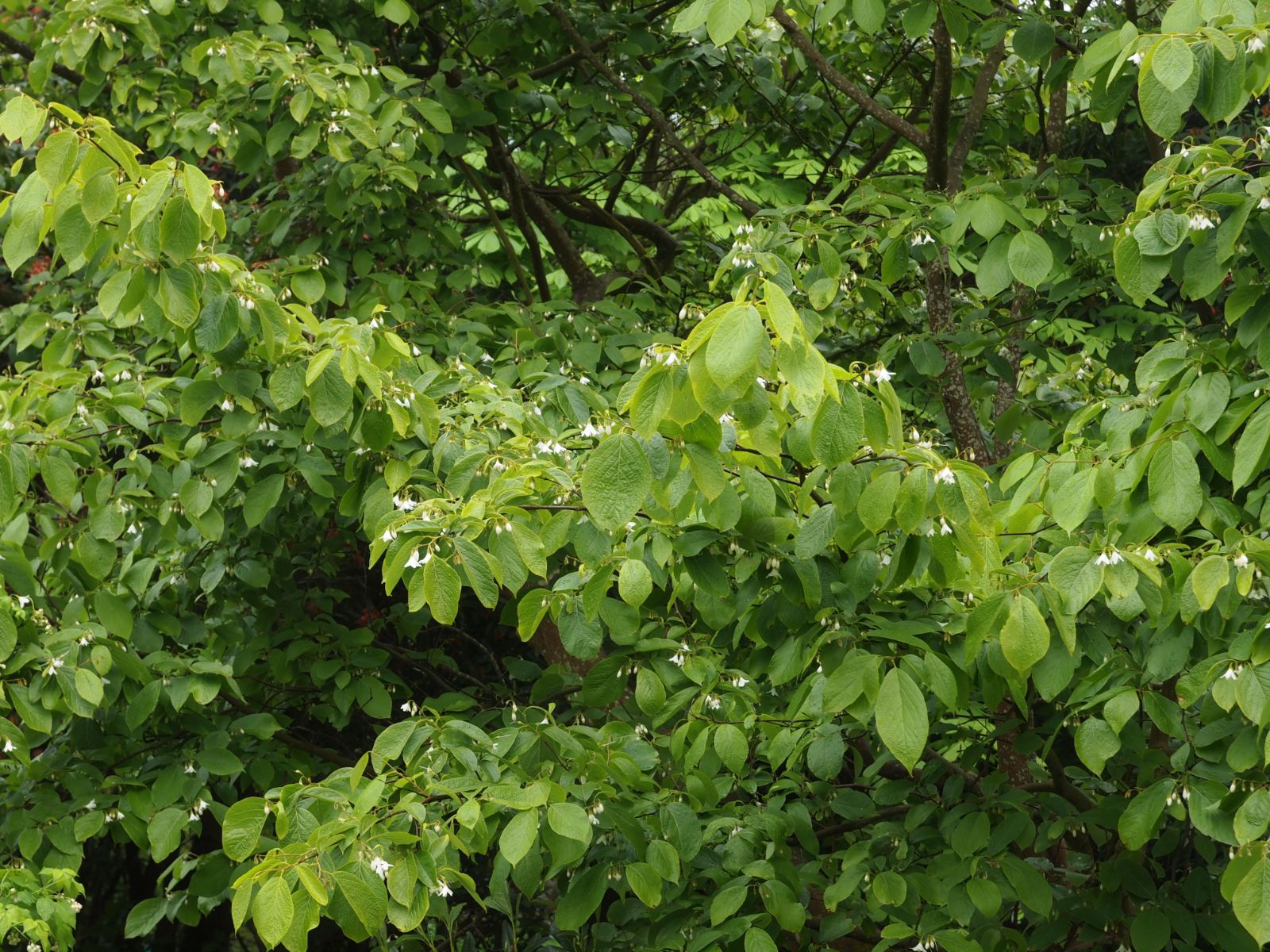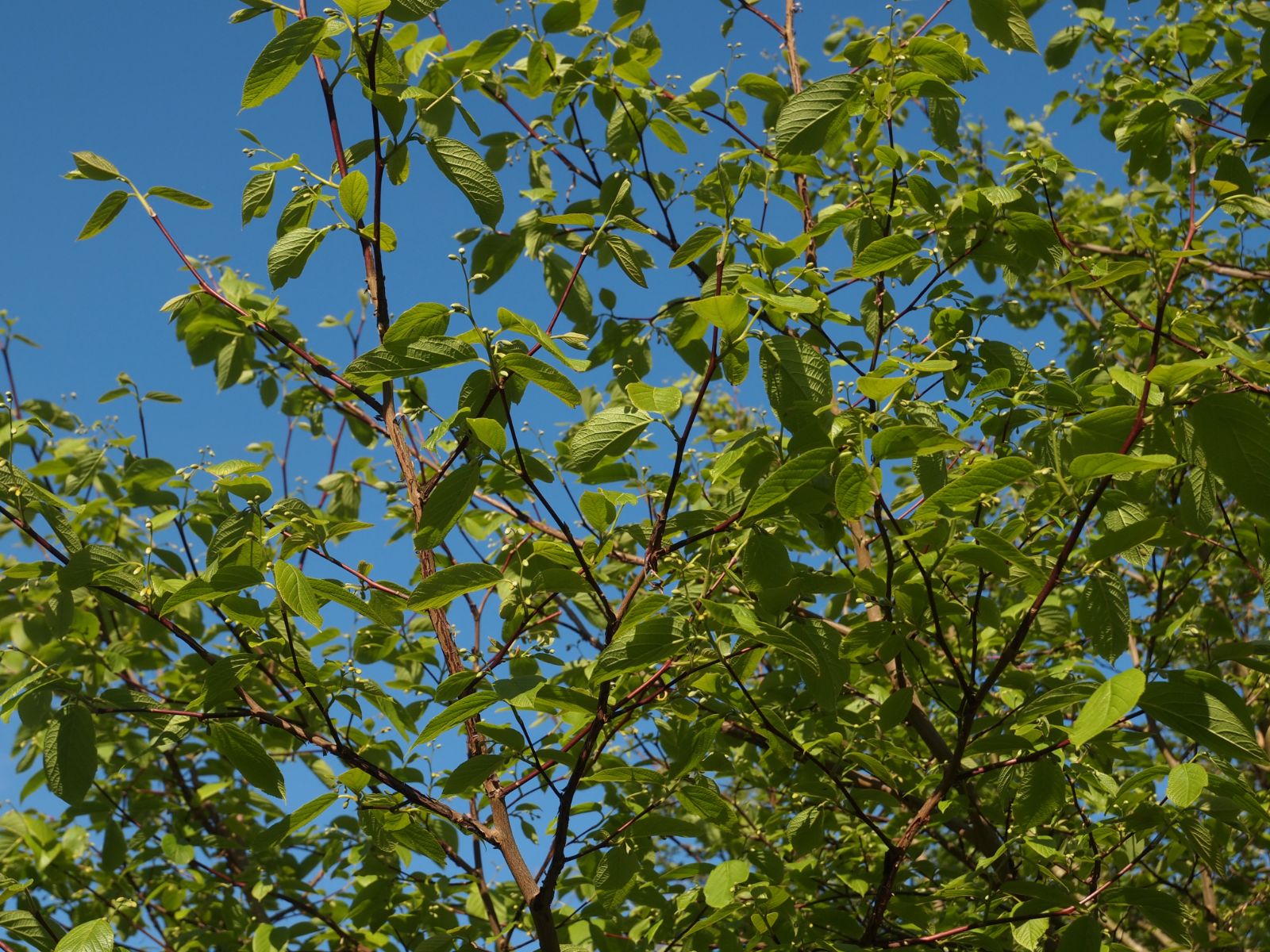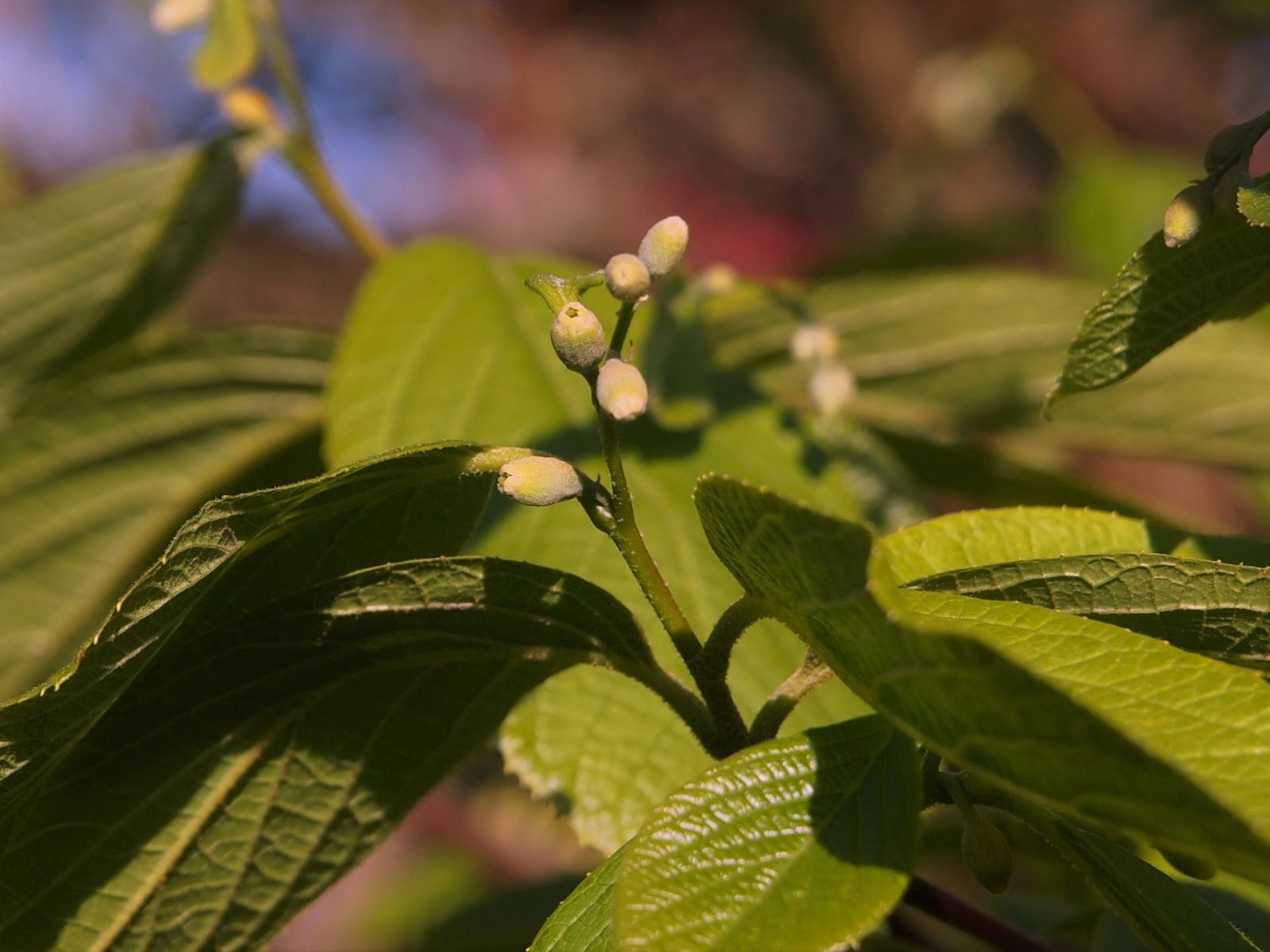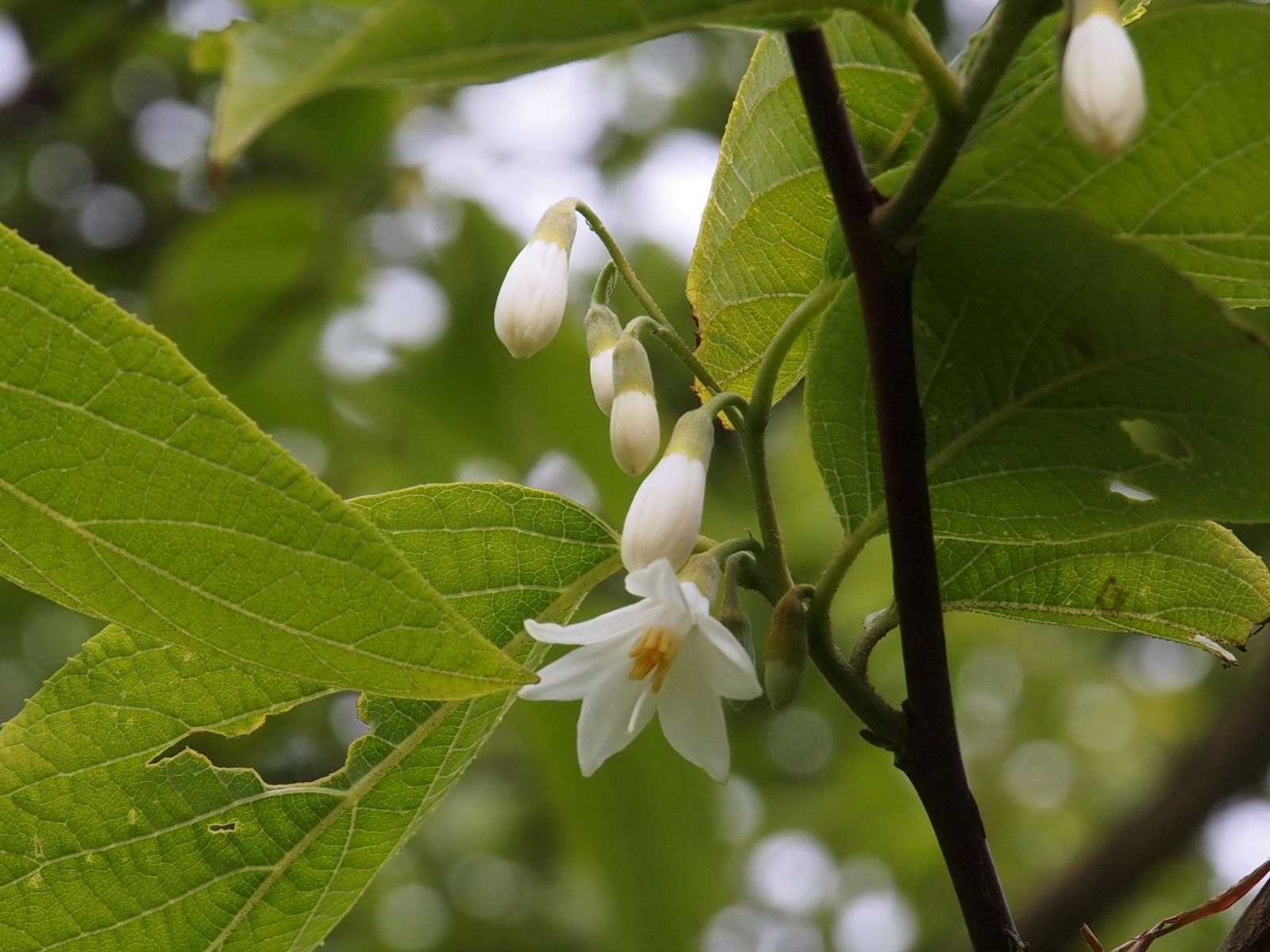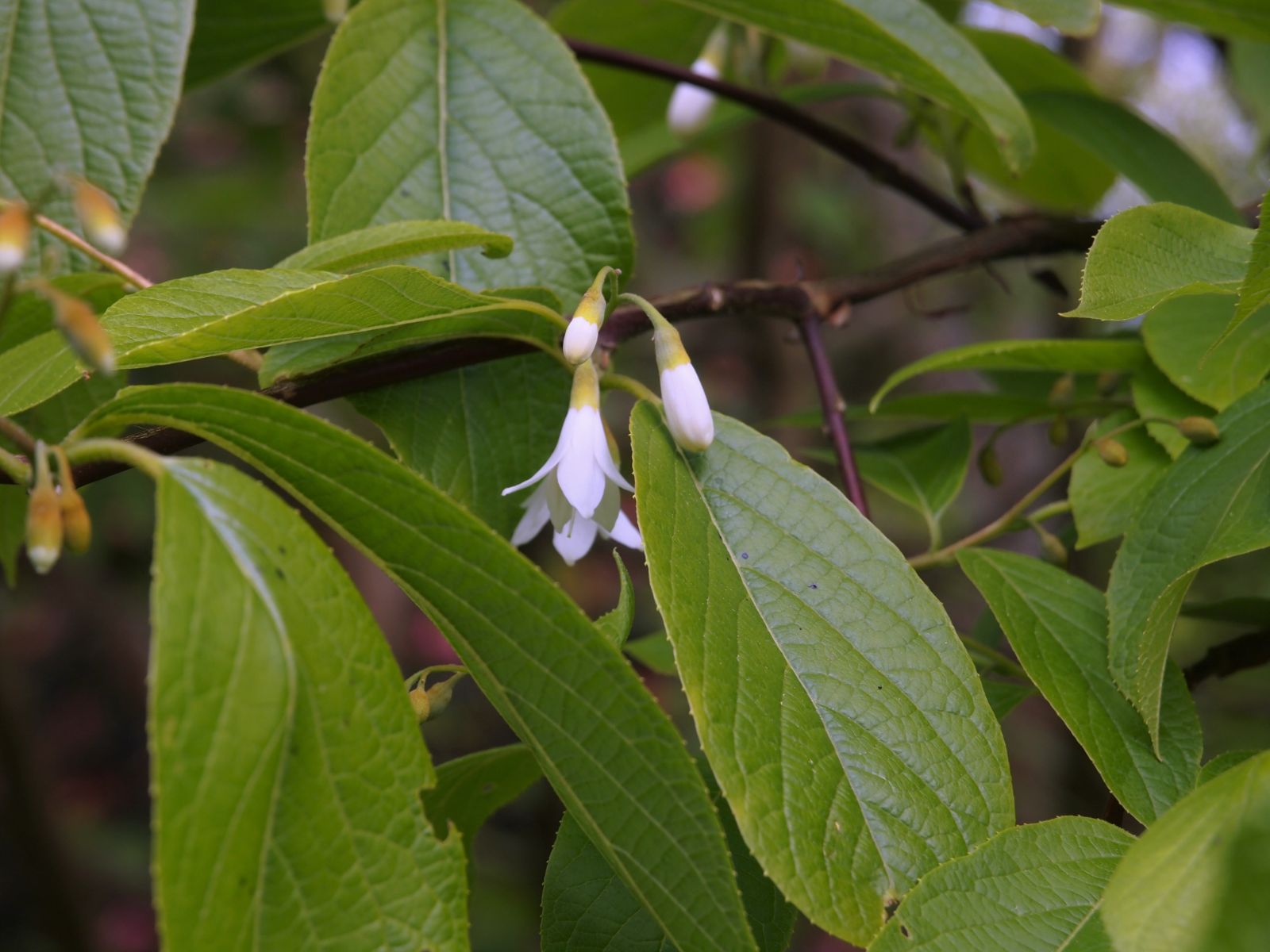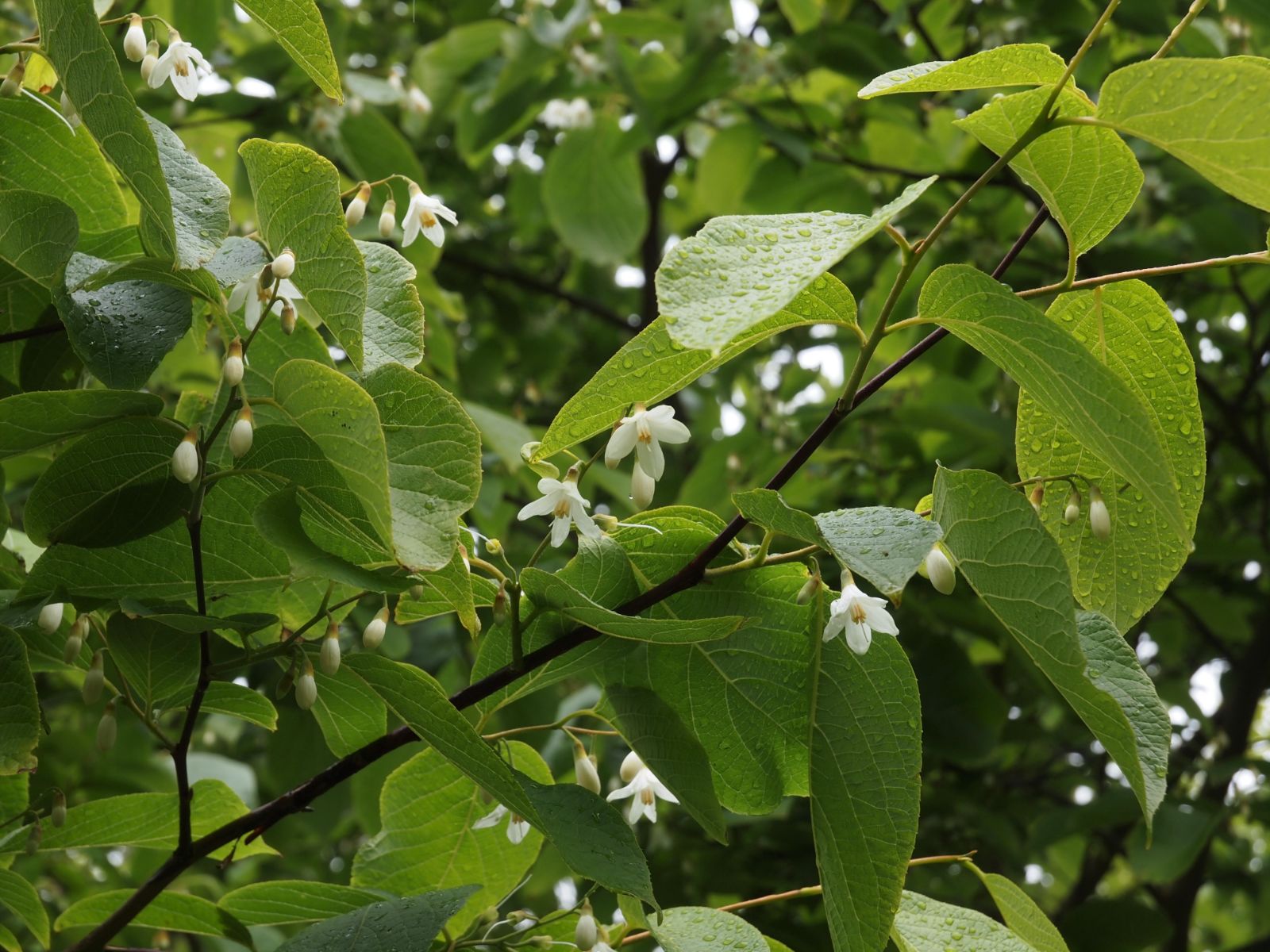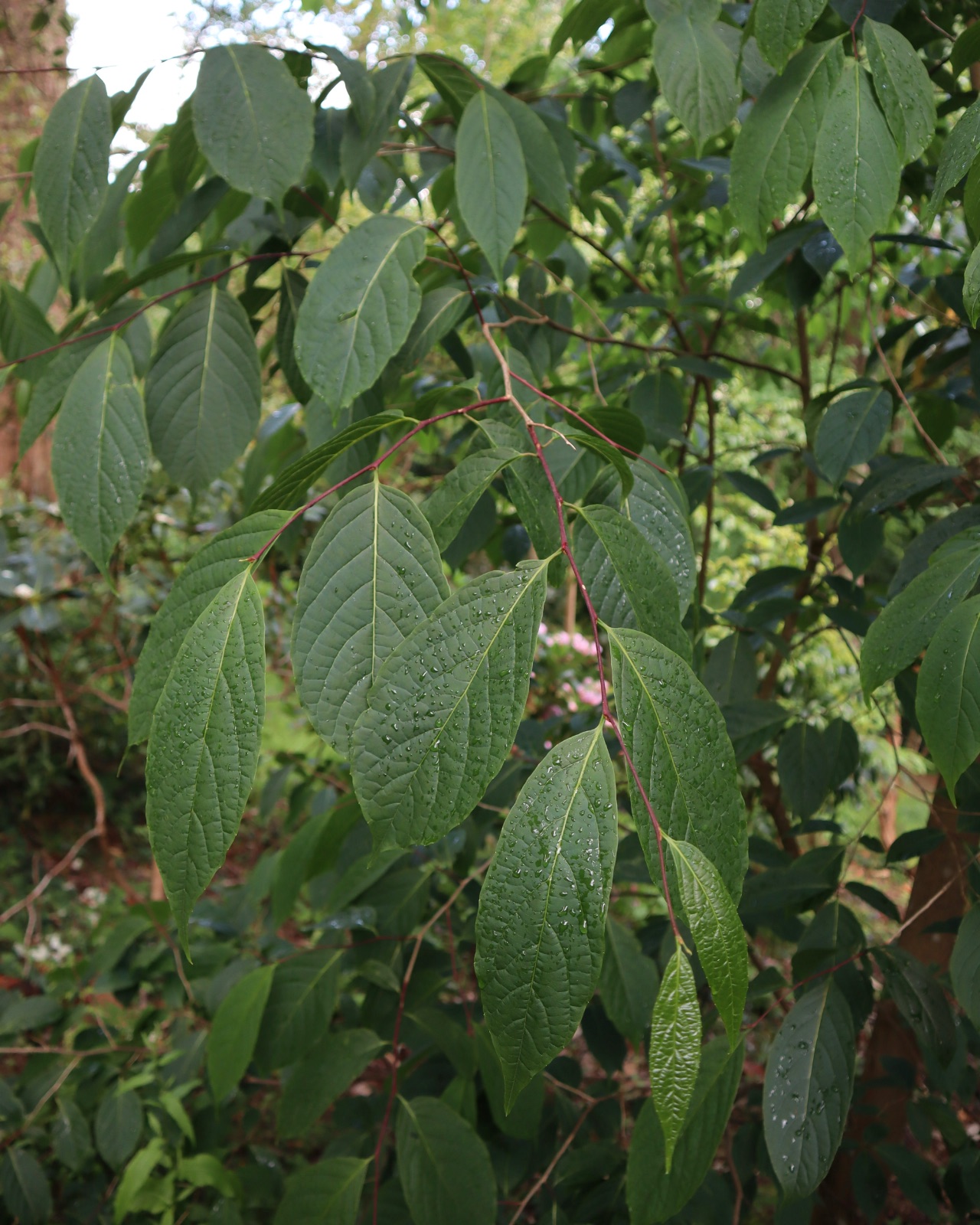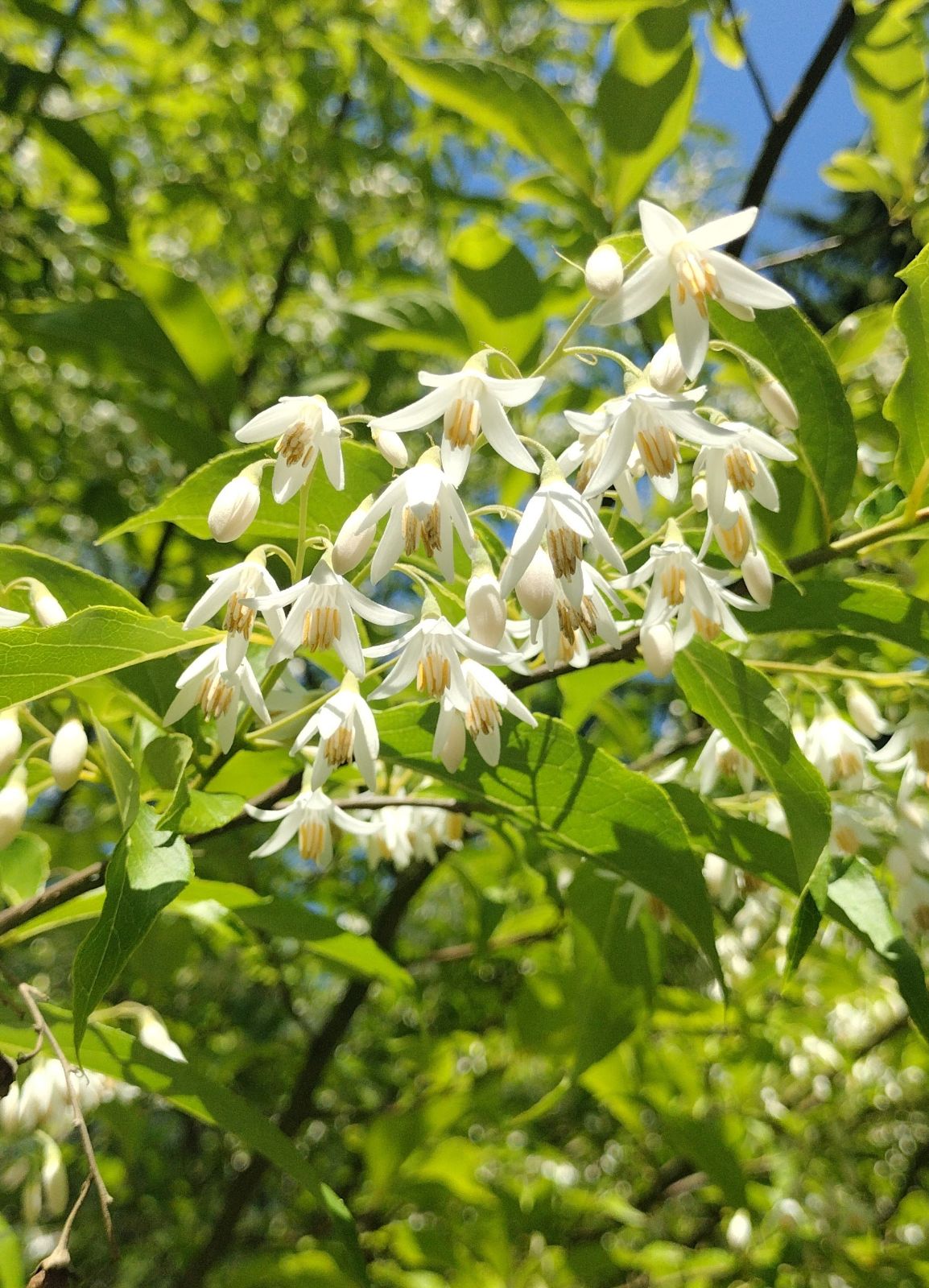Styrax odoratissimus
Sponsor
Kindly sponsored by
Arabella Lennox-Boyd
Credits
Alan Elliott (2018)
Recommended citation
Elliott, A. (2018), 'Styrax odoratissimus' from the website Trees and Shrubs Online (treesandshrubsonline.
Genus
Synonyms
- Styrax veitchiorum Hemsley & E. H.Wilson
- Styrax prunifolius Perkins
Other taxa in genus
- Styrax americanus
- Styrax calvescens
- Styrax confusus
- Styrax dasyanthus
- Styrax faberi
- Styrax formosanus
- Styrax grandifolius
- Styrax hemsleyanus
- Styrax hookeri
- Styrax japonicus
- Styrax limprichtii
- Styrax obassia
- Styrax officinalis
- Styrax platanifolius
- Styrax redivivus
- Styrax serrulatus
- Styrax shiraianus
- Styrax suberifolius
- Styrax tonkinensis
- Styrax wilsonii
- Styrax wuyuanensis
Trees 4–10 m tall. Branchlets glabrous. Leaves leathery to papery, alternate, 4–15 × 2–8 cm, blade ovate to ovate-elliptic, upper surface glabrous, lower surface brown stellate pubescent on veins, six to nine secondary veins on either side of the mid-rib, margin entire or remotely serrulate, apex acuminate to acute; petiole 0.5–1.0 cm. Inflorescence terminal racemes or panicles, 5 to 11-flowered, 5–8 cm long, densely yellow stellate tomentose; pedicel 1.5–1.8 cm. Flowers to 1.5 cm long; calyx five-toothed; corolla tube c. 0.5 cm long; corolla lobes c. 1cm, long, elliptic to obovate-elliptic, densely stellate pubescent. Stamens shorter than corolla; filaments slightly flexuous at middle, densely white stellate pubescent. Fruit subglobose, 0.8–1cm long, densely grey-yellow stellate tomentose, apex with curved rostrum. (Hwang & Grimes 1996).
Distribution China Anhui, Fujian, Guangdong, Guangxi, Guizhou, Hubei, Hunan, Jiangsu, Jiangxi, Zhejiang.
Habitat Damp shaded ravines, slopes in forest thickets; 600–1600 m asl.
USDA Hardiness Zone 6
RHS Hardiness Rating H7
Conservation status Least concern (LC)
This species was introduced by E.H. Wilson under the name Styrax veitchiorum through the Veitch Nursery from western Hubei in 1900, then again from his 1907–1909 expedition sponsored by the Arnold Arboretum, and this name was used in the previous editions (Bean 1981b). Recent debate about S. veitchiorum being treated as a synonym of S. odoratissimus has centred around the disparity in leaf size from recent introductions from southwest China when comparted to the few remaining Wilson plants. Looking at material across the whole range these seemingly different plants fall within the overall diversity of S. odoratissimus (Huang et al. 2003).
The Royal Botanic Garden Edinburgh has an original Wilson introduction, Wilson 308 from his 1907–1909 expedition for the Arnold Arboretum. Caerhays has the champion tree for this species, measured at 5 m high in 2016 (The Tree Register 2018), which is also very likely from the same seed lot as the tree in Edinburgh. S. odoratissimus resembles S. hemsleyanus and should be planted more frequently, particularly for the sake of its very fragrant flowers.

